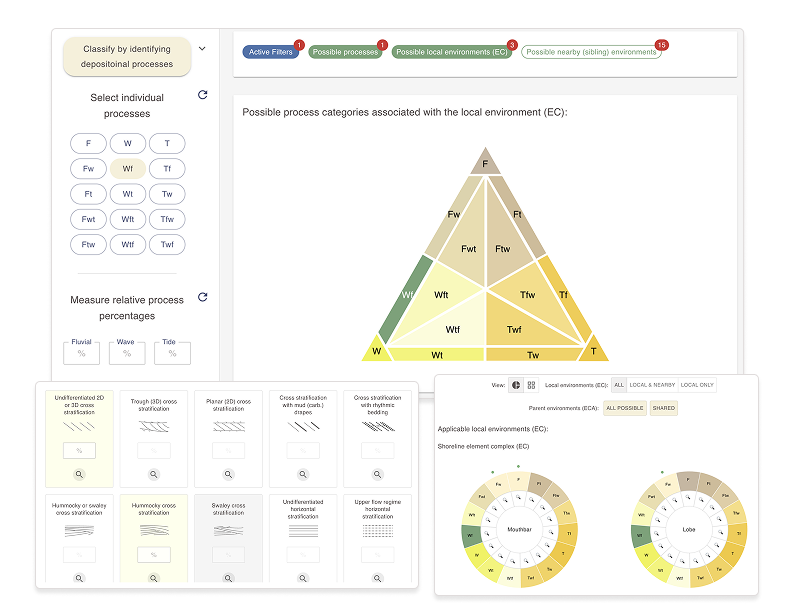Introduction
Use the Characterize environments dashboard to interpret depositional environments in cored wells, make interpretations about architecture between wells, and make predictions about possible parent depositional environments.
The dashboard forces you do deal with depositional uncertainty and to consider possible alternative solutions based on limited input data.

Main practical uses
Interpret depositional environments in subsurface cored intervals.
Make predictions about possible depositional architectures in unsampled, inter-well areas based on interpreted core data.
Make predictions about possible parent depositional systems based on interpreted core data.
What you need to know
Make sure you understand the following concepts before you use the dashboard.
Facies interpretation is based on Element complex (EC) categories, which are the most convenient architectural units for working with local environments in core data.
Make sure to understand what an EC category is and what is its relation to parent and child hierarchy categories.
Element complex (EC) categories never cross maximum transgressive and maximum regressive surfaces in vertical facies succession. The core interval must be separated into regressive (RECAS) and transgressive (TECAS) intervals before you can use the app.
Core interval interpretation works in two different ways and the two interpretation methods can be combined.
-
You can assess the relative proportion of wave, tide, and fluvial processes in a core interval either qualitatively or quantitatively, and the apps provide possible results based on this input.
-
You can identify physical structures and trace fossils in the core interval, and the app employs a backed expert system to offer a range of valid classification categories based on the input.
Environment prediction is based on the simple premise that there are a limited set of possible relationships between local environments (EC categories) and regional, parent environments (ECA categories). For example, a TF-Mouthbar EC can never be a child of an F-ECA due to process considerations.
The application uses this principle to:
- Make predictions about possible parent ECA depositional environments based on interpreted local EC environments in core
- Make predictions about possible sibling EC categories that can occur away from a cored well. This is done by first evaluating possible parent ECA categories and then examining their possible EC children.